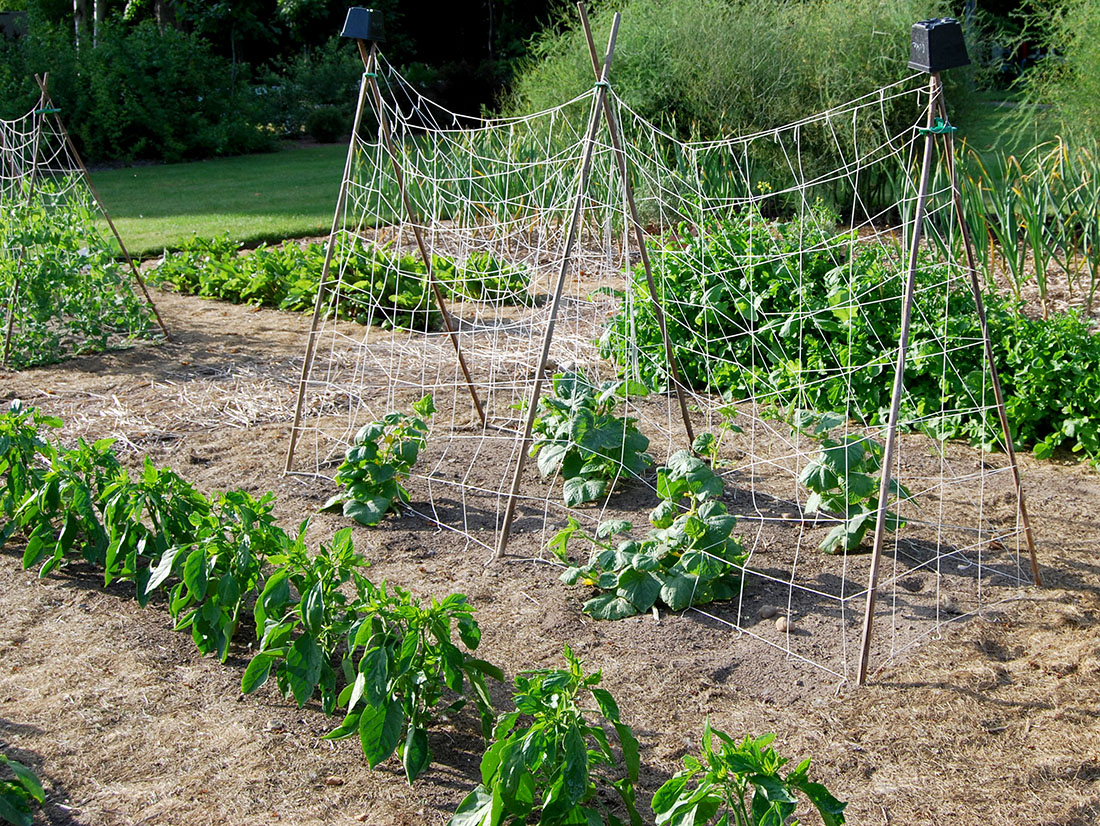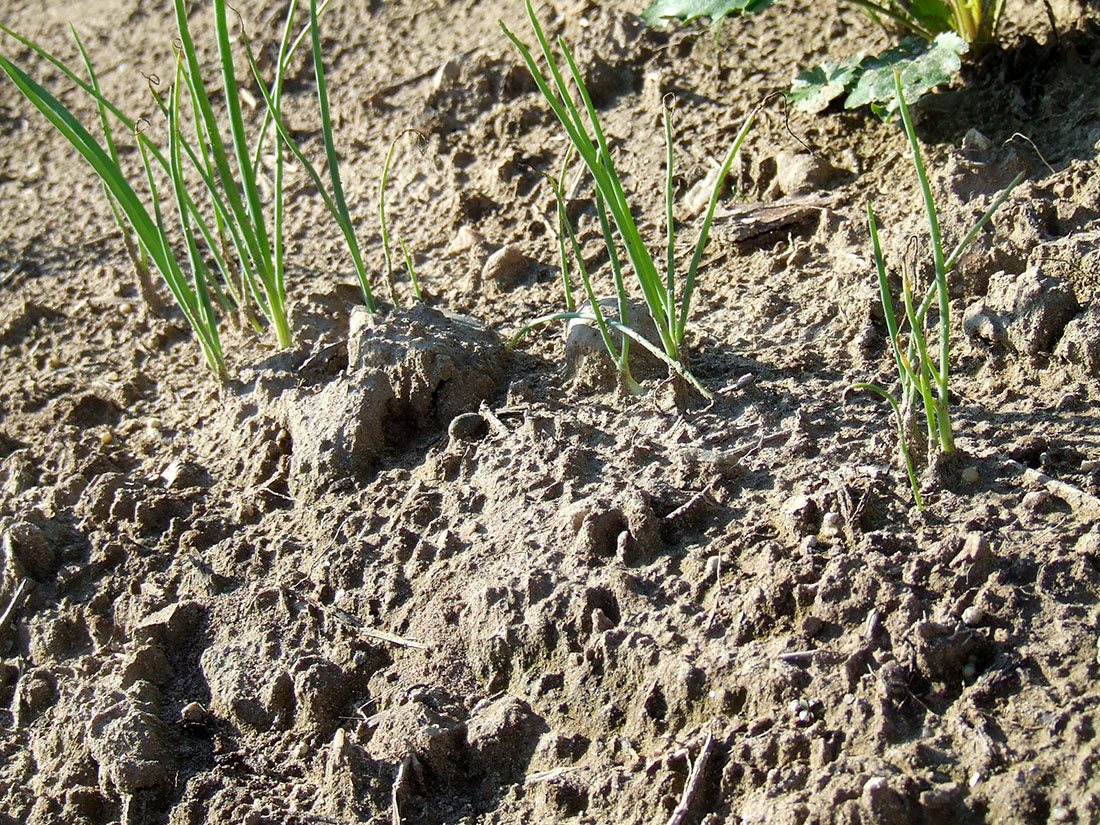
Smart fertilizer use: Vegetable gardens begin with soil management plan
DOWNLOADMarch 10, 2025 - Rebecca Krans
Soil is the foundational medium for plant growth, supplying the necessary nutrients while providing spaces to hold air and water. Healthy soils contain organic matter which supports living organisms such as worms and insects. This same organic matter also supplies food for microorganisms, like bacteria and fungi that in turn make nutrients available for plant roots. When a soil is well-managed, it is able to support healthy, vigorous root growth. So how does a gardener know when and how much fertilizer to provide?

A plan that has lasting benefits
Smart fertilizer use focuses on good soil management as a long-term process to improve soil quality. Soil management techniques such as adding organic matter, avoiding or reducing tillage, planting cover crops and avoiding compaction will result in short-term gains such as improved plant root systems and reduction of susceptibility to diseases and insect pests. Over the long haul, when organic matter is increased, better soil porosity and water infiltration leads to an increase in water-holding capacity, helping the smart gardener reduce water usage.
Before deciding to fertilize, determine the soil type, pH, nutrients in your garden soil, and the nutrient requirements of the vegetables you wish to grow. An MSU soil test will reveal this information and tell you how much organic matter is present. Test vegetable garden soils every three years to monitor your soil management progress. For more information on soil tests, see the smart gardening tip sheet “Don’t guess – soil test!” Soil tests can be purchased online at the MSU Extension Bookstore (search for E3154).

Designing the plan
Your soil management plan will become a tool to help you build a sustainable soil system. Organic matter will build up over time and the benefits that come with increasing organic matter will also be realized over several seasons. This sustainable approach focuses on “building the soil to grow the plant.” Nutrients within the soil are mainly supplied to garden plants through active organic matter containing living microbes, which break down the material within a few months to a year.
Each type of vegetable requires different levels of nutrients at varying quantities during the growing season. Synthetic and organic fertilizers are used to augment the necessary nutrient requirements that vegetables need. See the smart gardening tip sheet “Fertilizer basics for the smart gardener." Granulated and water soluble forms of fertilizer are nearly 100 percent available in the first year after application. However, organic forms such as animal manures, meals, compost and green manure release about one-third to half of their total nutrients in the first year after application. By using organic forms of fertilizer, you are adding to your soil’s organic matter and reducing the chance that nutrients will leach out, ending up in waterways and natural ecosystems.
The next step is to focus on management options – tillage reduction, cover crop use, applying animal manure and composting. Reducing the amount and degree to which you till up the soil helps provide a more stable environment for microbial activity. Less carbon is released into the air which can be used by microbes in decomposition and release of nutrients for plants.
The big cover-up
Cover crops are used to improve soil quality by adding organic matter, decreasing compaction and preventing soil erosion. Cover crop plant roots and leaves will be left behind long after your garden plants have been harvested. Cover crops could include annual ryegrass, winter wheat, winter rye, buckwheat, oilseed radishes and hairy vetch. Find out which are best suited to your needs at the Midwest Cover Crops Council website.
Once you’ve harvested the top portion of garden plants such beans and peas, leaving their roots will also help support microorganisms. Since plants in this family are known to “fix” or accumulate nitrogen in their roots, the material left behind will provide nutrients to the next crop you plant.
Nutrient values of animal manure differ depending on the animal species, method of storage, bedding material used, and the animal’s food source. Compost can vary too. Many commercial composted manure products are available to purchase.

Less is more
General recommendations are given for use of synthetic fertilizers by the manufacturer. Be sure you follow the specific recommendations and apply at the correct time and amounts. A smart gardener is very thoughtful on placement of fertilizer as well as reducing overall applications. Many manufacturers recommend fertilizer products be “broadcast” over a generalized growing area. This is the best approach for lawns, but for newly emerging garden plants, more directed application methods are less wasteful. The “side-dressing” method can be used once the plants are growing by applying fertilizer on both sides of the row 6 to 8 inches away from the plants. “Banding” is applying narrow bands of fertilizer in furrows 2 to 3 inches to the side of the planting area and 1 to 2 inches deeper than the seeds or plants will be planted. In this case, placing the fertilizer at the proper depth is required to prevent burning new seedling roots.
Overall, smart fertilizer use involves much more than applications of fertilizer. It focuses on determining a soil management plan that, over time, will create a more sustainable soil system. Remember, build the soil to grow your plants.
For more information on a wide variety of smart gardening articles, or to find out about smart gardening classes and events, visit the Gardening in Michigan website.
This publication is supported in part by the Crop Protection and Pest Management Program 2017-70006-27175 from the USDA National Institute of Food and Agriculture. Any opinions, findings, conclusions, or recommendations & expressed are those of the author(s) and do not necessarily reflect the view of the U.S. Department of Agriculture.



 Print
Print Email
Email





